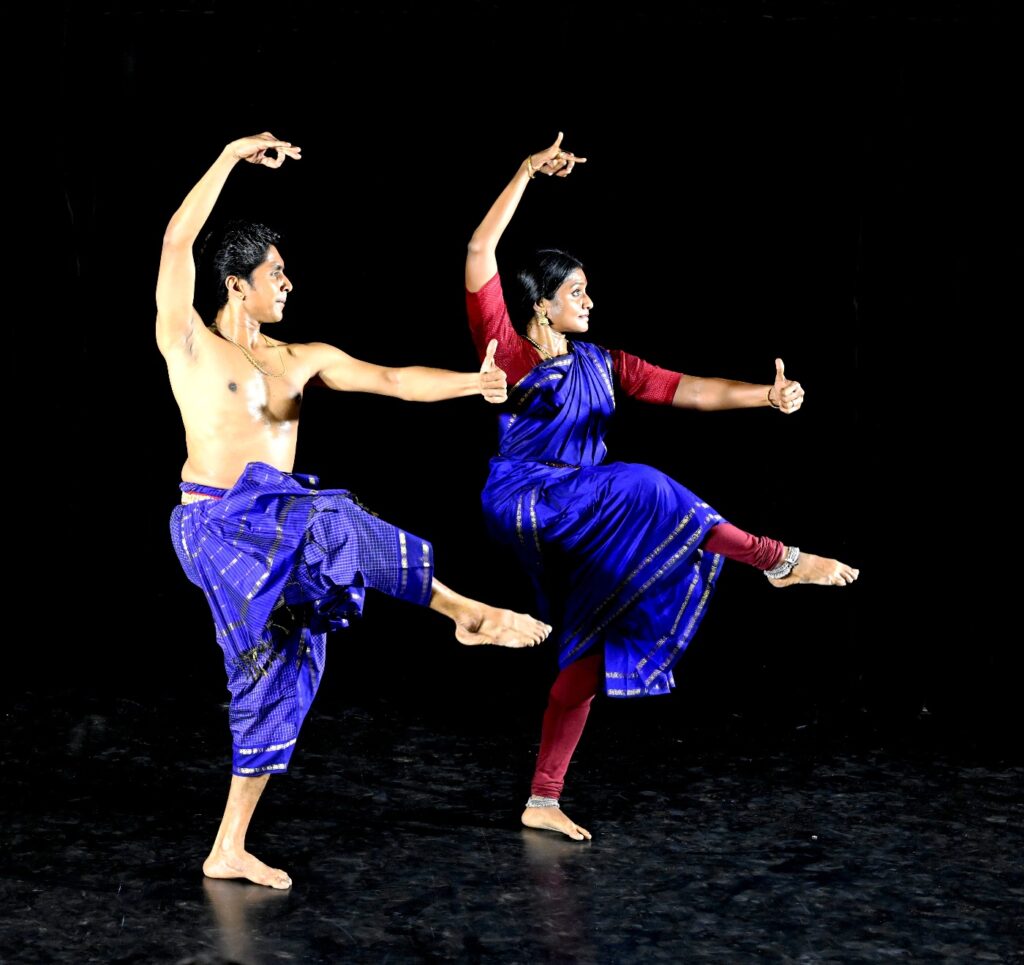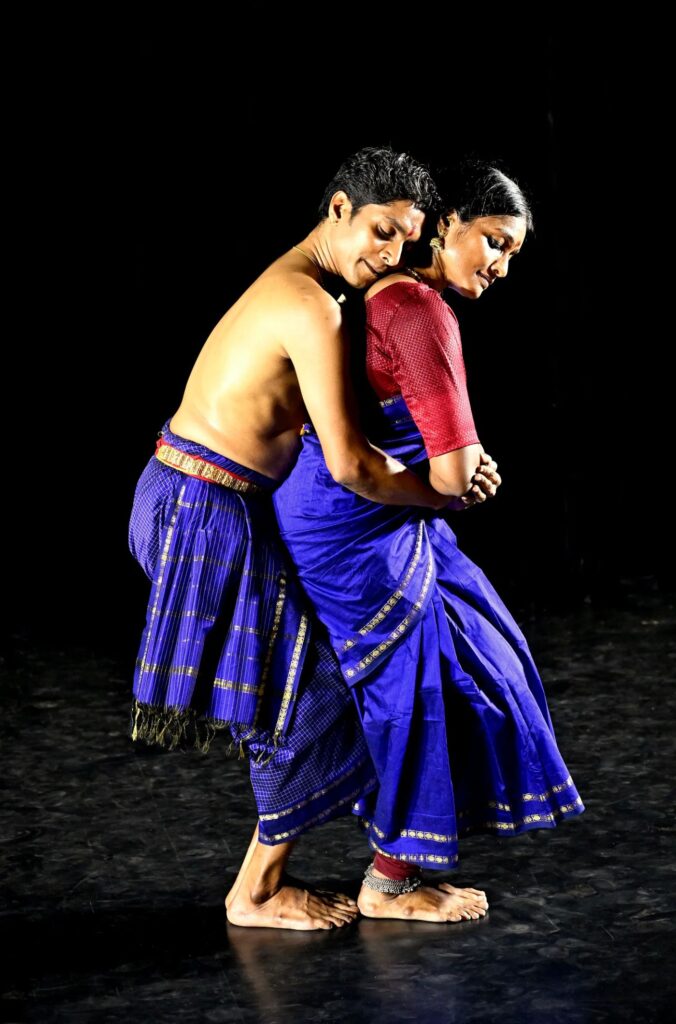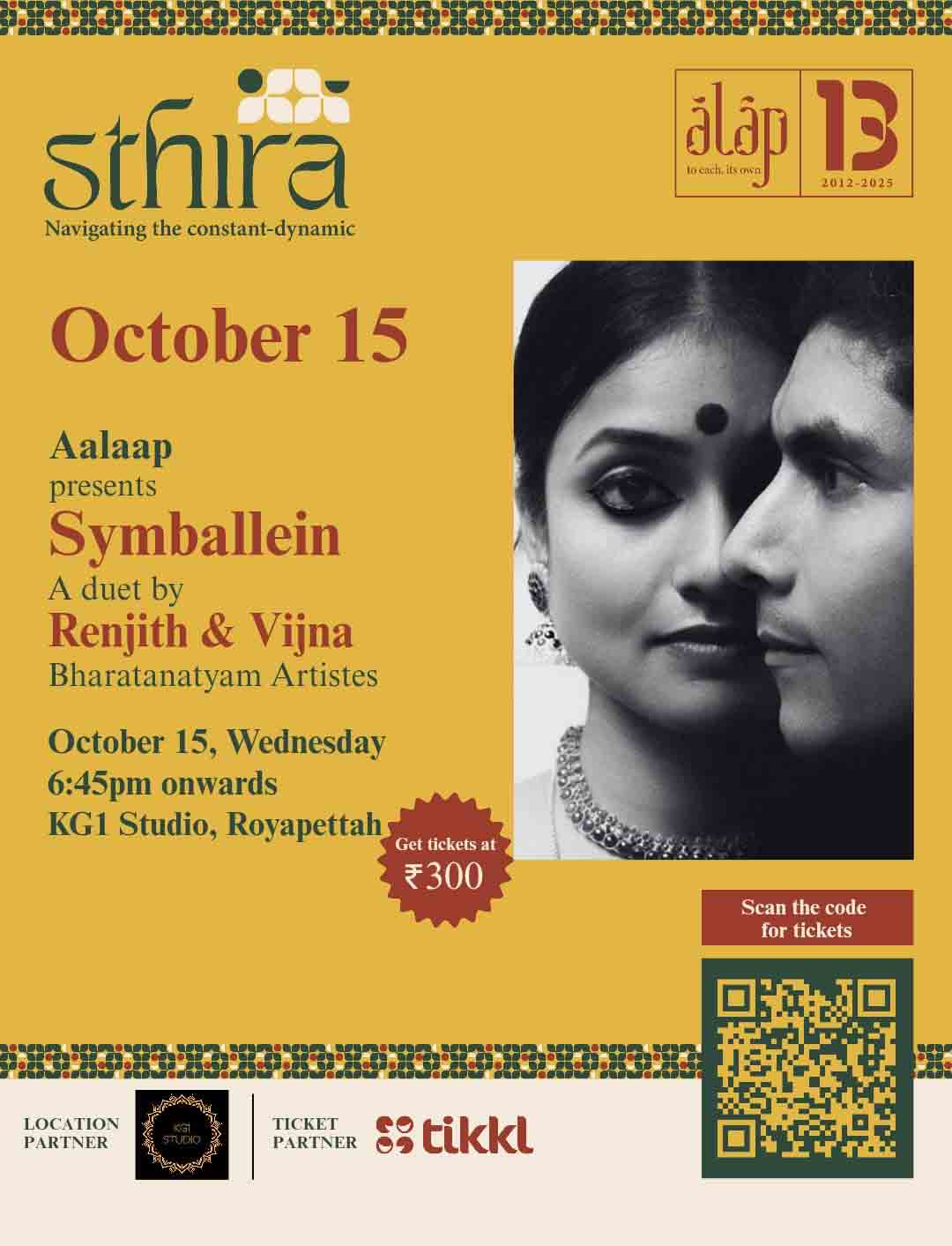Aalaap’s Sthira: Navigating the Constant-Dynamic, October 15, 2025 at KG1 Studio, Chennai.
To commemorate Aalaap’s thirteenth anniversary, Renjith Choorakkad and Vijna Vasudevan presented Symballein, a work that, as its title suggests, achieved a seamless confluence of ritual and performance.

From the opening Pancha Deva Stuti, Symballein sustained an inner sthāyī of surrender, unfolding within what felt like a consecrated mandala. The intimate setting of KG1 Studio, adorned with marigold garlands delicately framing the perimeter between audience and performer, heightened the impression of entering a ritual enclosure.
By invoking the five deities, Gaṇeśa, Śiva, Devī, Viṣṇu, and Sūrya, through the presence of kalasham(sacred vessel), chāmaram (fan), śankha (conch), and dīpam (flame), the dancers affirmed that these were not theatrical props but auspicious presences. Through their metaphorical waving, they became gateways where ritual and performance are assimilated. Their exit, measured and reverent—moving through the mudrās of each deity while turning in aramandi, was profoundly moving, creating an ambience of hushed reverence before the applause.
In the next piece, the dancers introduced a white cloth to symbolize the illusion of duality — Prakṛti and Puruṣa, the two fundamental realities. In both choreography and execution, they offered not narrative illustration, but a deeply felt experience. The elemental evocations, Vyom (Space), Anila (Wind), Hutāśa (Fire), Salila (Water), and Vasudhā(Earth), were rendered through abstract imagery that suggested rather than described. The piece concluded in an embryonic fold, the two dancers coiled into the primal embrace, as Śiva and Śakti. Visually stunning, yes — but more profoundly, it offered a glimpse into the womb of creation.

The final segment, the Śiva Pañcākṣara Stotram of Ādi Śaṅkarācārya, drew on the essence of Pañcākṣara. The final pose, Renjith arms raised in sama-sūcī, surrendering as devotee before Vijna, who stood as a benevolent Śiva, was haunting, arresting—a visual anjali.
Renjith and Vijna embraced simplicity in costume and staging, allowing the work to rest entirely on intention of self-surrender. Each composition was conceived and choreographed with a deep understanding of word and essence, and then performed by them.This was not a display of artistic ambition, but an act of spiritual authorship offered with the blessings of Guru Prof. C.V. Chandrasekhar, to whom this work quietly pays homage.
Symballein reminds us that when Nāṭya is lived at its most essential frequency, it reveals its meditative essence, returning us to the silence where art and prayer are indistinguishable.
Kudos to Akhila Krishnamurthy and her team at Aalaap for curating an environment so profoundly aligned with the artists’ inner vision. It is uncommon to witness such coherence between choreography, curation, and space — a rare treat indeed.

